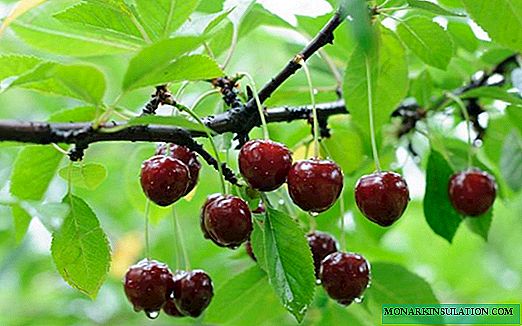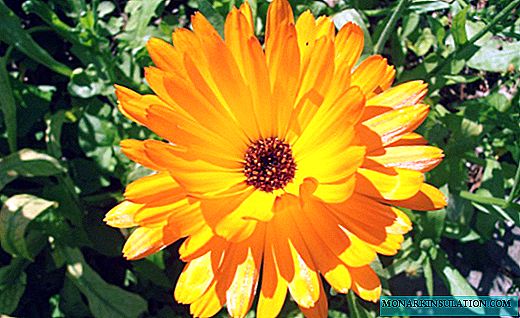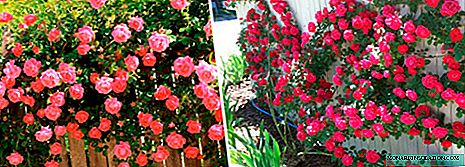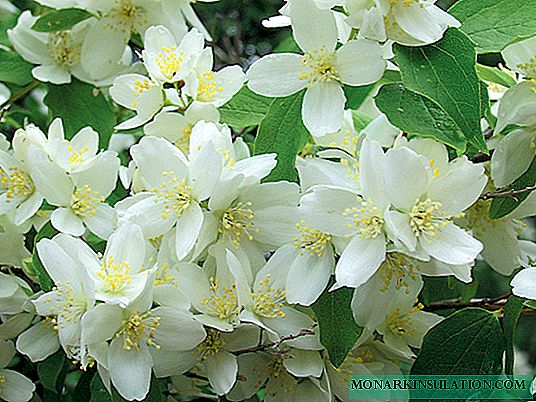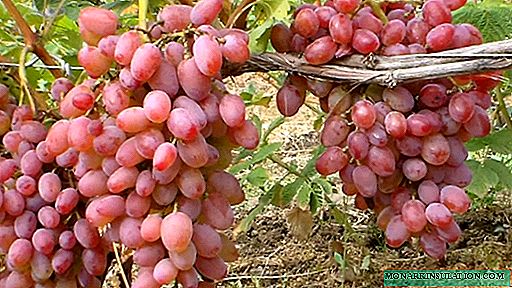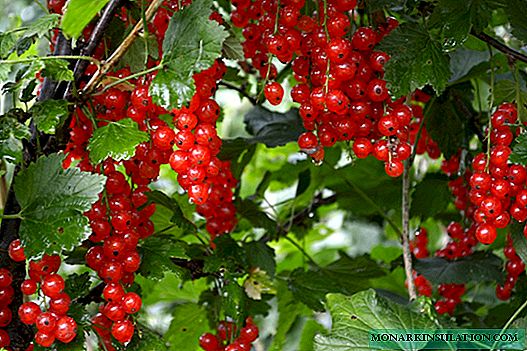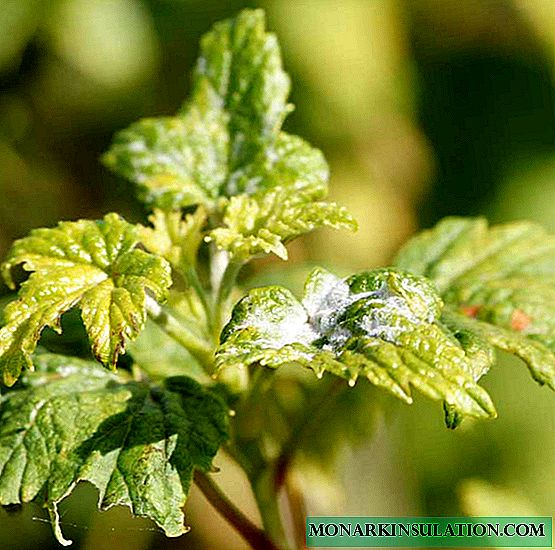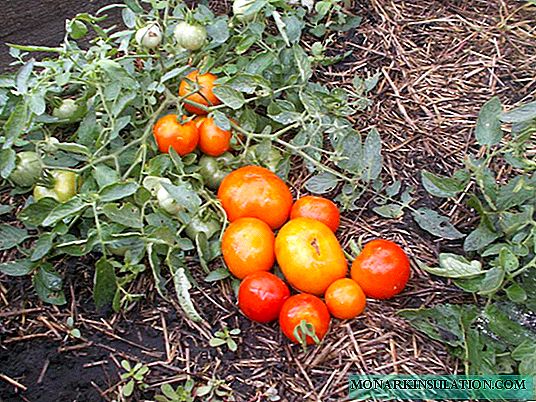
Low-growing tomato varieties invariably cause increased interest, since it is believed that caring for them is somewhat easier. Among these varieties, the Mongolian dwarf stands out especially - a tomato whose bush grows almost Plastusian, not up, but in breadth, like many plants in Siberia, where the variety was bred. It is still not included in the State Register of the Russian Federation, although it is becoming increasingly popular among amateur gardeners throughout our country, and especially in the regions of Siberia and Transbaikalia.
Description of the variety Mongolian dwarf, its characteristics, region of cultivation
Tomato The Mongolian dwarf is considered a variety of amateur selection, but it is difficult to find official information about its origin, since the variety is still not listed in regulatory documents. Apparently, in this regard, it is very difficult to find the seeds of the Mongolian dwarf in open sale: those who want to plant this variety are looking for seed among friends and on various Internet sites. This is a risky business, therefore frequent and extremely negative reviews about the variety are connected, apparently, with the fact that people acquire various fakes.
Since the Mongolian dwarf was bred for cultivation in areas of risky farming, it is grown mainly in regions such as Siberia, the Urals, and the Far East. Of course, no one bothers to plant it everywhere, but in regions with a warm climate the advantages of this variety will be leveled, and there is a huge choice for tomatoes in the middle lane, and even more so for the southern regions.
The Mongolian dwarf is a tomato for open ground: planting it in greenhouses is very wasteful, since it is a superdeterminant variety that grows only 15–25 cm tall, rarely higher. A place in greenhouses is expensive, they try to grow indeterminate varieties, the bushes of which grow in height to the very ceiling, occupying the entire useful volume. The Mongolian dwarf, on the contrary, grows in breadth, forming a creeping bush with a diameter, sometimes up to a meter. The variety has a powerful root system, but the bulk of the roots are close to the surface of the earth, without penetrating into the deeper layers of the soil.
On the main stem, which quickly begins to spread along the ground, a huge number of stepsons are formed, on which the entire crop is born: on each stepson, 3-4 fruits. Therefore, pinching - one of the main procedures in tomato farming - is categorically not applicable to this variety. All the stepsons try to leave on the bushes of this tomato, except for those, which, according to the owner, grow out of place and unnecessarily thicken the bush.

The number of fruits on a tomato bush Mongolian dwarf is amazing
The Mongolian dwarf is not required and tied to supports. On the one hand, this is a simplification of the work of a gardener, but on the other hand, one has to put up with the fact that the main part of the crop lies practically on the ground, which is not only unaesthetically, but can also cause decay of fruits. Fortunately, rotting of tomatoes is not typical for this variety.
With timely sowing of seeds for seedlings, the variety begins to bear fruit at the end of June, and they manage to harvest the bulk of the crop before cold rainy weather, fraught with late blight development. True, after the passage of the main wave of fruiting, the formation and growth of tomatoes, although to a lesser extent, lasts a long time, until the onset of frost.
The yield of the variety is very high, the bushes are covered with large tomatoes weighing about 200 g, but the size of the tomatoes of the last part of the crop, closer to autumn, is much more modest. As a result, from one bush you can get up to 10 kg of fruits. They have a smooth, rounded shape and a bright red color, cracking of the fruits is manifested to a minimum. The pulp is dense, juice content is high. Opinions are contradictory about taste: it cannot be called excellent, but for the early Siberian variety it is very good, with acidity. The purpose is universal: from fresh consumption to the preparation of various dishes and preparations for the winter.
The variety is considered unpretentious in care, which is especially important for beginner gardeners. The Mongolian dwarf can also be interesting to small farmers, since tomatoes are well tolerated, well stored and quite presentable.
Video: characteristic tomato Mongolian dwarf
Appearance
Tomato fruits have a classic "tomato" shape and color, so the appearance of the picked tomatoes is difficult to distinguish from many other varieties.

Seeing the collected fruits of the tomato Mongolian dwarf, we can say: "Nothing special, there are many such tomatoes"
However, what can be seen directly on the bed will practically dispel doubts that it’s the Mongolian dwarf in front of you: it seems that only he can spread on the ground and bear a huge number of even bright red rounded fruits.

The Mongolian dwarf grows as if "lying", and tomatoes are located on the ground, on which litter is often laid
Advantages and disadvantages, features, differences from other varieties
The very description of the Mongolian dwarf variety indicates that interest in it should be high. Indeed, this tomato has a fairly large number of advantages. This is for example:
- high degree of adaptation to severe climatic conditions;
- drought tolerance;
- simplicity in leaving: lack of need of formation and tying up of bushes;
- very early harvest maturity;
- fruiting duration;
- high resistance to late blight;
- the possibility of growing in a seedlingless way in warm regions;
- transportability and good keeping quality of fruits;
- large-fruited, uncharacteristic for superdeterminant varieties;
- high productivity.
Varieties also have disadvantages. Especially often gardeners complain about the following:
- the difficulty of acquiring real seeds of this variety;
- a sharp decrease in productivity in conditions of high humidity;
- negative attitude of the plant to heavy soils;
- not very high palatability of the fruit.
Since the Mongolian dwarf is intended for open ground in cold regions, where tomato cultivation has always been a big problem, it should be recognized that the ratio of the pluses and minuses of the variety still speaks of its high potential: with such a high yield and unpretentiousness, the noted shortcomings go by the wayside. It is difficult to recall another widespread variety with similar properties.
Among the early varieties, for example, the White Bulk with fruits of a similar shape, but smaller in size, has long been revered. However, comparing these tomatoes is not entirely appropriate: they are very different both in the shape of the bush and in consumer qualities.
Recently, many varieties and hybrids of tomatoes have appeared, which are also early and superdeterminant. This, for example, Alpha, Gin, Aphrodite, Sanka, etc. These are varieties that bear tomatoes similar in shape and color to tomatoes of a Mongolian dwarf, rather high-yielding and early ripening. However, most of the similar varieties grows to at least half a meter height, and only the dwarf spreads on the ground. Whether this is considered a virtue is a moot point, but the fact that the Mongolian dwarf is of great interest is beyond doubt.
Features of planting and growing tomato Mongolian dwarf
Only in the warmest regions is it possible to grow the Mongolian dwarf by direct sowing in the ground. In those regions for which this variety is bred, seedlingless cultivation is not applicable, therefore, like the vast majority of other tomato varieties, they begin to grow it by sowing seeds in cups or seedlings at the very beginning of spring.
Landing
The specific time for sowing seeds is determined by the possible time for planting seedlings in the garden: until this time there should be about two months. Of course, it’s not difficult to cover the Mongolian dwarf in the garden with non-woven materials, since it grows in a very low bush, and its seedlings are also miniature. Therefore, transplanting seedlings is not necessarily carried out during the onset of this summer, but the earth must also warm up at least until 14 aboutC. Therefore, under Siberian conditions, seedlings are unlikely to be planted earlier than the last days of May. It turns out that sowing seeds for seedlings should be done around March 20.
The technique of growing tomato seedlings is well known to every gardener, at this stage the variety does not have any significant specifics. It is only important to remember that the bushes grow very slowly, in a month they reach a height of only 7-8 cm, which should not scare the gardener. Yes, and seedlings ready for planting are usually lower than seedlings of other varieties. However, all growing operations look traditional.
- Seed preparation. The operation includes calibration, disinfection with potassium permanganate solution and hardening in the refrigerator for 2-3 days.

Sometimes seeds are even germinated, but this operation will accelerate the emergence of seedlings by no more than 1-2 days
- Soil preparation. Increasingly, gardeners buy ready-made soil for growing a small amount of seedlings. If you make it yourself, it is best to mix peat, humus and sod land approximately equally, and then disinfect, spilling with a weak solution of potassium permanganate.

When buying soil in a store, it is advisable to choose the one that is intended for tomatoes
- Sowing seeds. It is better to first sow in a small box, and then planted (dive). Sowing is carried out to a depth of about 1.5 cm, not more than 1 seed for every 3 cm.
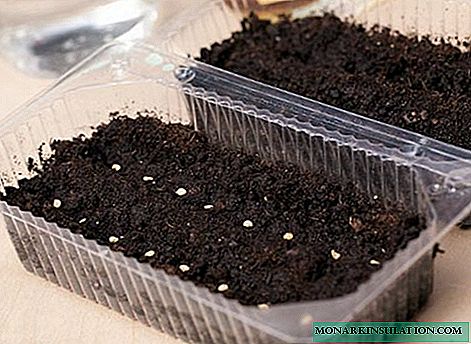
For a dozen or two seeds, any unnecessary box is suitable
- Temperature regulation. Immediately after the appearance of the first seedlings, seedlings need a cold: 16-18 aboutC. After 4-5 days, the temperature is raised to room temperature. But the lighting should always be very good: on the southern windowsill - the optimal amount of light.
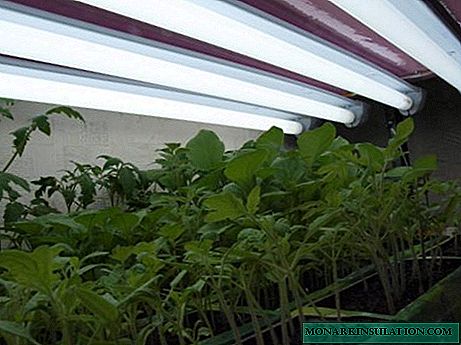
If there is not enough light in the room, you must definitely equip
- Pick-up: performed when the 2nd or 3rd true leaf appears. Seedlings plant more freely, slightly pinching the central spine.
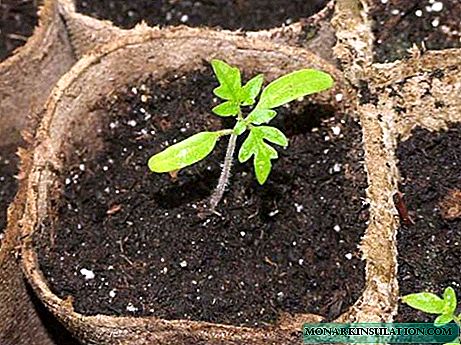
The best picking tank - peat pot
- Rare and moderate watering (excess water is more harmful than lack). It may take 1-2 fertilizing with any full mineral fertilizer, but if the soil is properly formed, you can do without them.
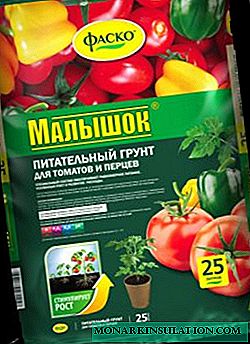
It is convenient to use special fertilizer mixtures for top dressing.
- Hardening. 7-10 days before transplanting into the garden, seedlings are gradually accustomed to coolness and lack of moisture.
At the age of 50-70 days, seedlings are moved to the garden. Planting this tomato does not have significant features, but despite the superdeterminantity, bushes are not often placed: given the fact that they grow to the sides, the holes are prepared at a distance of at least 60-80 cm from each other. Since the seedlings of the Mongolian dwarf are low, a deepening is almost never required when planting it.

When landing, the Mongolian dwarf is buried only if the seedlings are pulled
A positive property of the variety is that, due to the very low height of the bushes, it is not afraid of wind, therefore, the choice of location of beds is simplified. But this tomato makes high demands on the soil: it grows very poorly in clay soil. Therefore, in the case of clay prevailing during the preparation of the garden bed, in addition to the usual doses of fertilizers, pure sand is also added to it.
Like other tomatoes, the Mongolian dwarf is in great need of phosphorus nutrition, therefore, in addition to a bucket of humus and a handful of wood ash, 1 m2 beds add up to 50 g of superphosphate. You can make superphosphate directly into the planting hole (10 g), mixing it well with the soil. After planting, the seedlings are watered, the soil is mulched and during the first week they are allowed to take root in the bushes without disturbing their peace.
Care
Tomato care The Mongolian dwarf is simple. Bushes are watered only as the soil dries out strongly: this variety tolerates drought easily, but painfully responds to excessive moisture. After watering and rains, loosening is required, accompanied by weeding, but as the bushes grow, it becomes impossible, and instead the bed is mulched with chopped straw or dry grass: because of the lodging of the bushes, they try not to use humus as mulch, they try to keep the tomatoes on a clean litter.
An infusion of grass is also a good top dressing for this tomato: the first time it is needed 2-3 weeks after the seedlings are moved to the garden. Two more top dressings are given during the ripening of tomatoes, but they need less nitrogen in their composition, so you can replace the organic with infusion of wood ash (200 g per bucket of water).
The Mongolian dwarf does not need any special bush formation, nor does the garter, but if some parts of the plant seem superfluous, they can be cut off: it is desirable that the tomatoes are exposed to sunlight during ripening.
If the gardener wants to tie up the plants, preventing them from excessive lodging, he must do this very carefully: the stems of this tomato are quite fragile and easily break.
The variety is considered resistant to disease, but in those regions that are distinguished by excessively cold and wet August, it can still undergo late blight. This is a dangerous fungal disease that can destroy the entire crop remaining by this time in the bushes. Therefore, in such places prophylactic spraying of plants with relatively harmless preparations, for example, Fitosporin or Trichodermin, is necessarily carried out.
Reviews
In 2013, I planted MK in the greenhouse. The result - waved, but all went into the foliage. In 2014, I put him in the exhaust gas. The result was excellent. Low, compact, productive. The conclusion suggests itself: in the greenhouse he does not belong !!
Larina
//www.tomat-pomidor.com/newforum/index.php?topic=2610.0
This year I planted a Mongolian dwarf - several years ago I purchased seeds from Vera Panova from Chelyabinsk. Of the five, one survived. Grew in the open ground, one of the first to fall ill with late blight, removed tomatoes green, sour taste. I will not plant more.
Gardener
//dacha.wcb.ru/index.php?showtopic=54504
I’m planting Dwarf constantly, my favorite variety, or maybe he just loves me. The taste is average, it depends on the weather, but it is very early and prolific and fruitful, almost a bucket from a bush 40 cm high. It starts to bear fruit in early July and until mid-August ... then I’ll take it off, because growing in exhaust gas, pouring ice water from a hose ...
Keel
//dacha.wcb.ru/index.php?showtopic=54504
He planted him for 2 years. The taste is very mediocre ...
Teglen
//www.sadiba.com.ua/forum/showthread.php?p=1091516
There is nothing stunning in this variety, there are more minuses than pluses. Seed germination of 30-45% (just something!), Grows very slowly. The fruits, instead of the promised 200 g, barely reach 60 g, sour. There are very few fruits, it is better to grow one Kibitsa bush than 5-MK. All tomatoes have a core root extending to a depth of one and a half meters, MK has superficial roots, and he needs frequent watering. She planted 10 pieces for testing, and pulled everything out and threw it out in the middle of summer.
Gutfrau
//www.lynix.biz/forum/mongolskii-karlik
Mongolian dwarf is a tomato variety with ambiguous characteristics. Even those who tested it on their sites give conflicting reviews. Partly, most likely, this is due to the low availability of real seeds of this variety. It is only clear that this tomato is quite unpretentious in growing and its fruits ripen very early, but everyone can draw more complete conclusions only after he tries to plant a Mongolian dwarf in his area.







